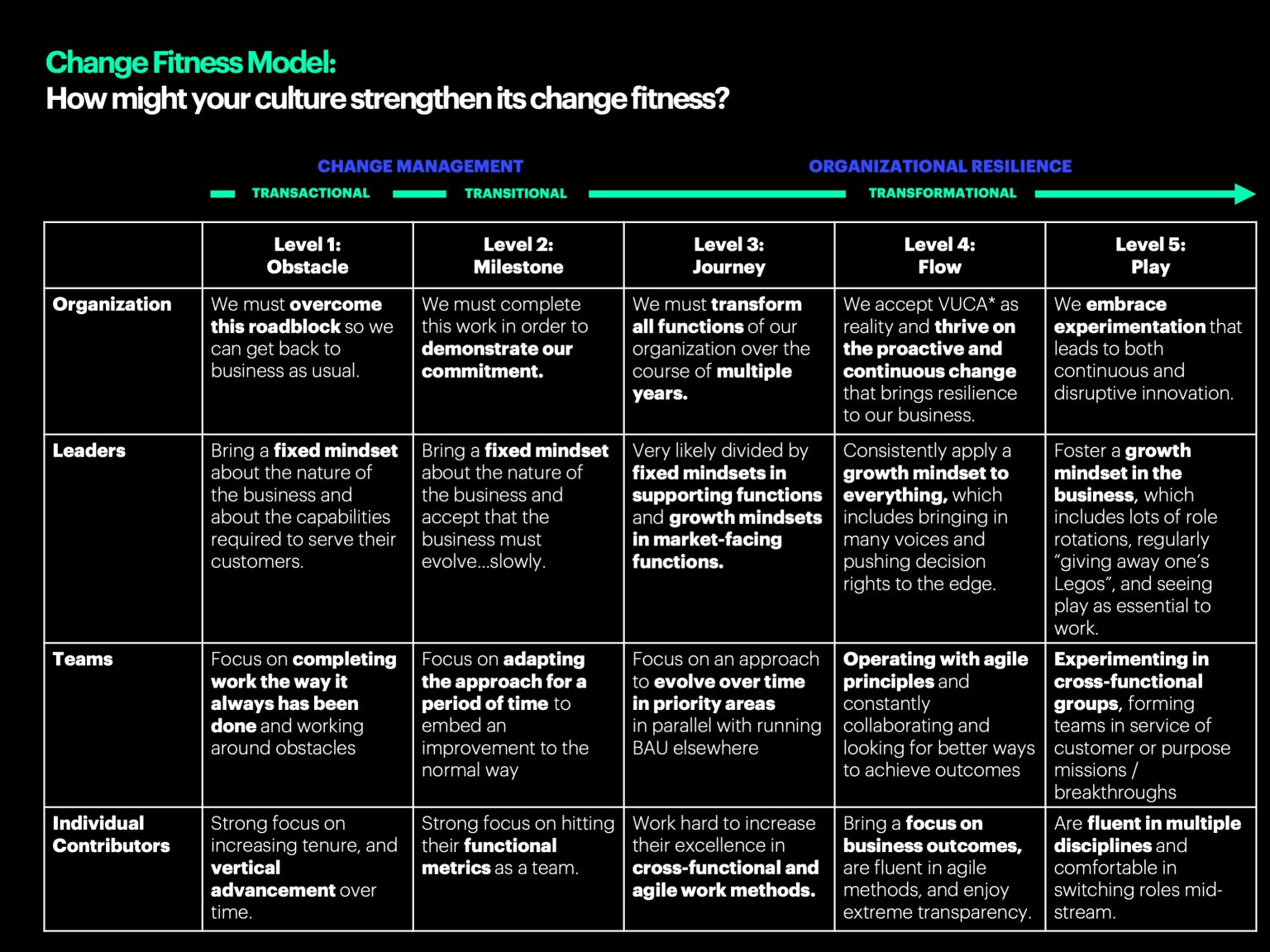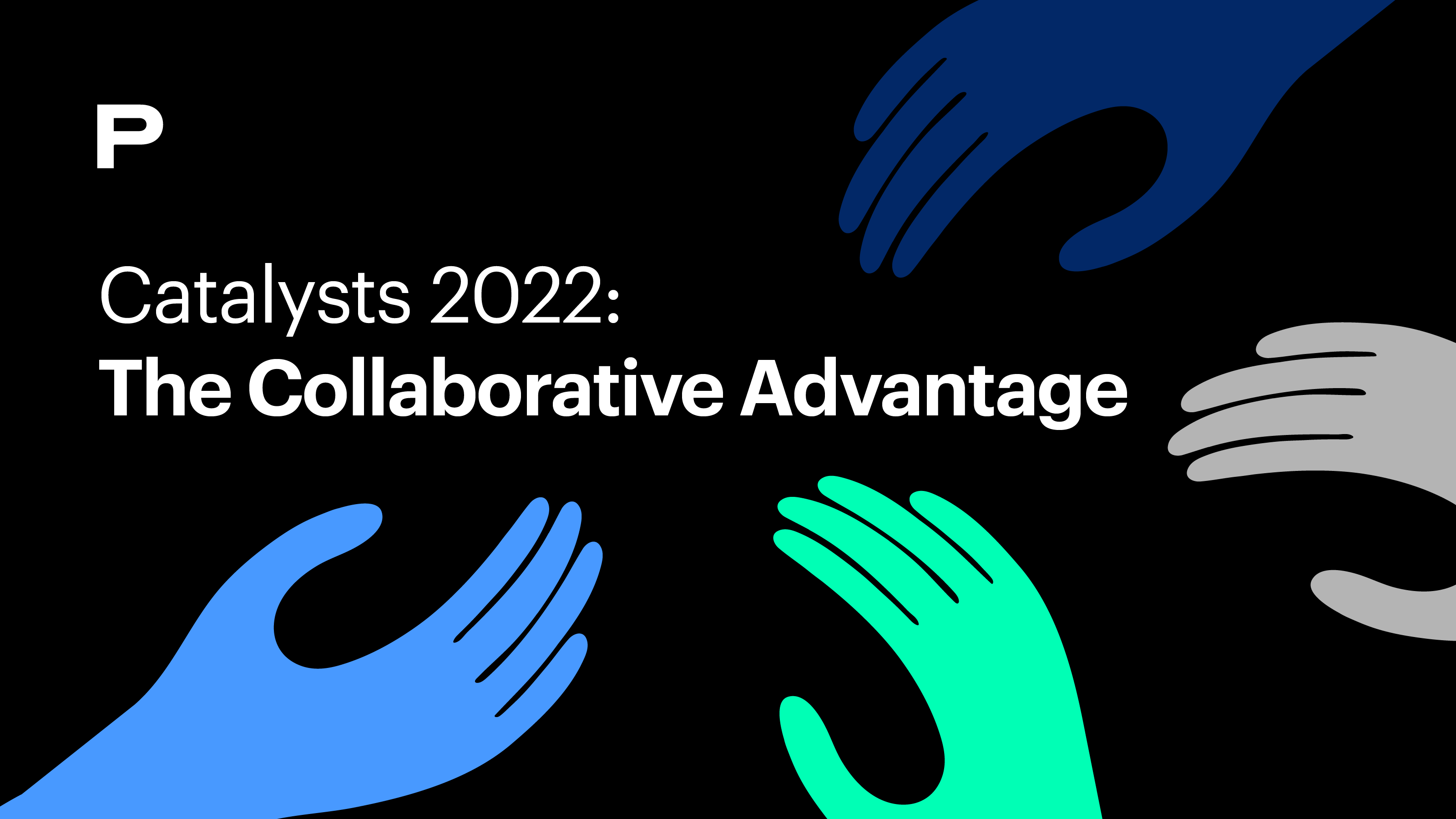BLOG
Transformational Change is the Name of the Game
How to create a change-ready organization through a culture of play.
The past few years have felt like anything but a game – unless that game is Monopoly and you’re losing to your older sibling after landing on Park Place for the eighth time. In this case, the taunting sibling has more teeth: global pandemics, social reckonings and war.
All of these factors have shaken people’s sense of safety, identity and trust. And these challenges have required companies in every industry to accelerate transformation—something that’s difficult in an environment where people are exhausted, frustrated and, at times, scared.
Fortunately, many companies are heeding the call to take care of their people with 90% of employers reporting an increase in investment in mental health programs (come on, the other 10%!) according to Wellable Labs’ “2022 Employee Wellness Industry Trends Report.”
And while holistic well-being is incredibly important, work itself still lacks the humanity (the human beings in “well-being”) needed to sustain change. But that’s where play comes in. Forgive the pun, but it plays a part in the transformation.
What is Play and How Does it Tie Into Transformation?

Prophet’s Change Fitness Model reflects the different starting points for how companies see and address change, ranging from the transactional belief that “change is an obstacle to overcome” to the transformational state of play where transformation can be a sport to be enjoyed.
You can think of play as “batteries not included.” Because, given the constant nature of change, those who have achieved play can spend less energy overcoming each effort and more time being fueled by it.
So how do you get to the state of play? Exactly—you play!
Scientists Meredith Van Vleet and Brooke Feeney define play as: A behavior or activity carried out with the goal of amusement and fun that involves an enthusiastic and in-the-moment attitude or approach, and is highly interactive among play partners or with the activity itself.
Applying this lens to work clarifies the opportunity–making work that people enjoy, that brings out enthusiasm and deepens connections.
The skeptic will say, “We don’t have time for play – we have work to do!” But those ahead of the curve see the intrinsic need to link the two. Better play means better work. In fact, in a 2019 study by Brigham Young University, teams that played video games together were 20% more productive than others.
That’s because play unlocks creativity, helping people tap into new sources of inspiration and ways of thinking—which creates better solutions.
And, especially at a time when the universe is playing chess with humanity, play creates sustainability and safety, encouraging people to enjoy what they’re doing, so they’ll want to do it more. And it deepens skill building, encouraging trial and growth in new ways. Checkmate.
Of course, play is easier said than done and toxic environments will reject it. People can’t experiment if they believe their job or reputation is at risk. They won’t be themselves if they don’t like the people they’re working with. And they won’t prioritize play if they’re getting mixed or conflicting signals from leadership.
Play shouldn’t be isolated to an innovation team, a single brainstorm, an occasional company outing nor the funniest person in the room. Play needs to take place across all levels and contexts – across a company’s culture, teams and individuals. Each reinforces the other with a company’s culture making it easier for teams to be able to play, and individuals bringing their whole selves to both innovation and the everyday.
How to Create a Culture of Play Within Your Organization
So how might you best implement a culture of play? We couldn’t not use the SMILE acronym, could we?
Safe
No one wants to play “the floor is lava” with actual lava. People need to feel safe in their environment. That means feeling confident that they can make mistakes and learn from them, not be punished by them.
According to Peter Temes, founder and president of the Institute for Innovation in Large Organizations (ILO), “that hasn’t changed since we began this work 15 years ago, and probably hasn’t changed from decades prior to that—this idea of lowering the cost of failure.”
Leaders can create safety by modeling and being transparent about failures and growth opportunities. Most importantly, leaders’ actions must speak louder than words – when individuals fail, they need to celebrate those learnings, not focus on the implications.
Leaders can also help create a sense of safety through joy and levity in the workplace. Jennifer Aaker and Naomi Bagdonas, authors of “Humor, Seriously,” have shown that companies that embedded humor in their culture had employees who were 16% more likely to stay at their jobs feel engaged and experience satisfaction.
Meaningful
By nature, games have stakes and meaning – it’s what makes them exciting and, as defined above, creates the enthusiasm that creates play. Giving meaning to play can take many forms.
One way is through reinforcing an organization’s purpose, helping people see why their work matters. Some companies create meaning through competition – whether individual incentives, team challenges or by focusing on external competition.
One company created an internal fantasy league, resulting in an 18% increase in outbound calls and an increase in morale. Making play meaningful like this can be a great cause for celebration and recognition as well—reminding people about why they need to be invested in what they’re doing. Of course, “meaningful” must be rooted in safety – if people fear the stakes are too high, that fear can hold them back.
Individual
Everyone’s favorite radio station is WiiFM – “What’s in it for me.” Ask someone about a project they’re working on, and they might smile. But ask them what they did this weekend, and they’ll light up—even more so if they get to talk about personal hobbies or passions.
Create more ways for people to light up, and you’ll create more ways to unlock that joy and translate it into their work and relationships. At a systemic level, consider how you’re fostering individuals’ passions and making them feel heard and represented. And at a team and day-to-day level, find ways to share them.
Linked
On the other side of the “individual” see-saw is the need to bring people together. Often, people have more fun working with other people, and collaboration creates those all-important feelings of togetherness and belonging. Prophet’s 2022 Catalysts research: The Collaborative Advantage finds that employees achieve better outcomes personally and professionally when they collaborate – 65% of respondents cited higher levels of productivity as a result.
In hybrid environments, it becomes more challenging, where it may seem like people are working together on endless transactional Zoom calls. In reality, there is a shrinking emphasis on true connections which require smaller group interactions and a mix of both work-related and non-work-related focuses.
Exploratory
People need new inputs to get to new outputs. Trying a new dish can be more fun and exciting than eating the same meal for the fifth time this week. Consider how to fuel people’s joy and creativity by putting them in new situations, hearing from new voices or thinking about things in new ways. Then, use that space to give people a chance to get their hands dirty, safely.
Build in the flexibility for exploration. A global airline used the power of play to teach the organization its seating pricing strategy. Leaders used a game of “The Flight is Right,” taking the principles of “The Price is Right” and applying it to the complex principles that airlines face. By approaching the learning in a new way, and allowing people to play and participate, the message stuck.
LEGO’s serious play methodology is another great example of encouraging exploration to envision challenges in new ways while tapping into the joy of being a child.
The creativity expert, Edward De Bono, describes “Rivers of Thinking” – the building nature of experiences that help us to unlock new solutions. When we fill our rivers with the same water, it becomes difficult to explore new ones.
FINAL THOUGHTS
Play isn’t a moment in time or something you do outside of work. Organizations can use the power of play to create a sense of safety in the workplace, give employees a purpose, and build trust– all factors needed to accelerate transformational change in an organization.



